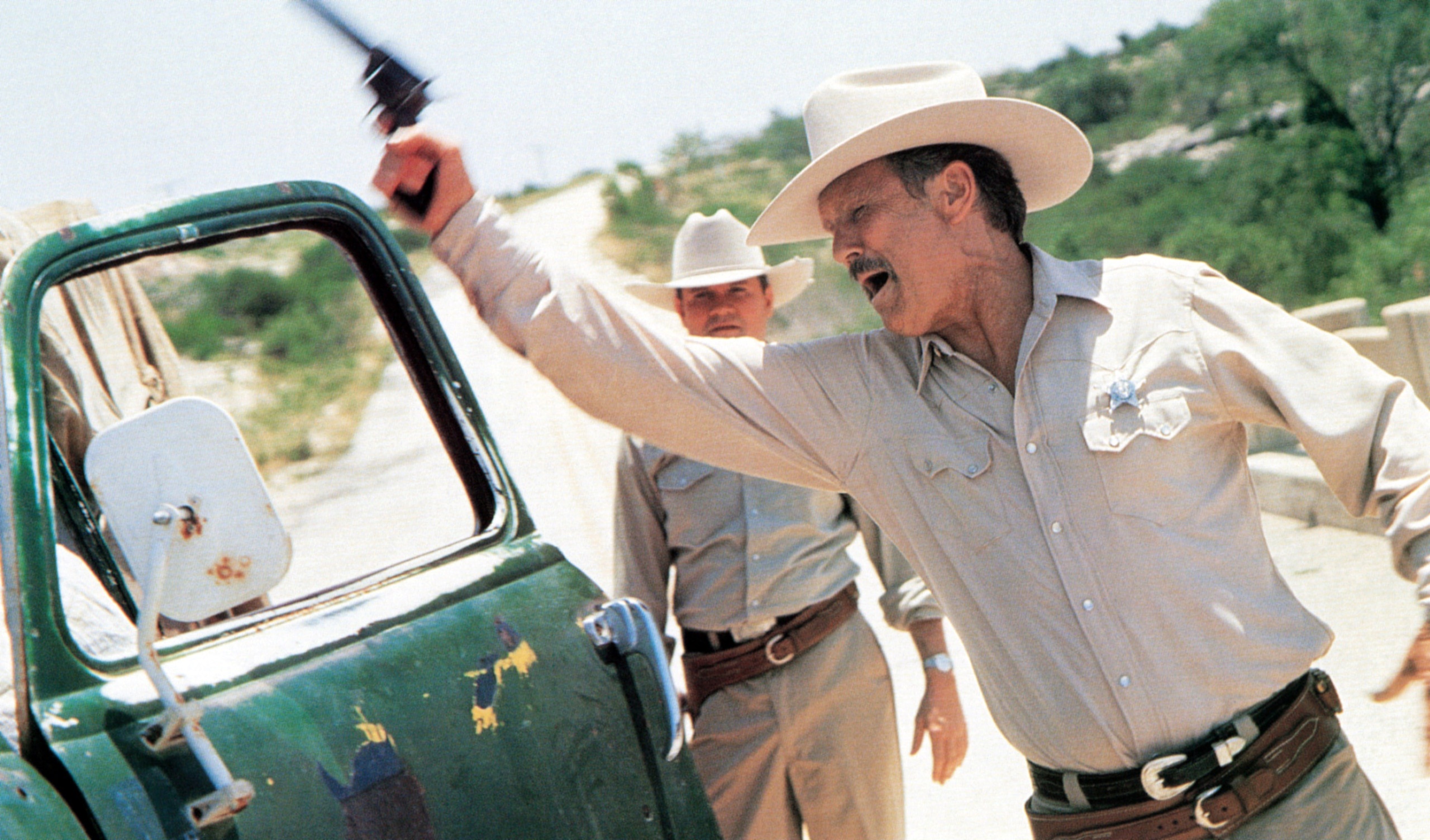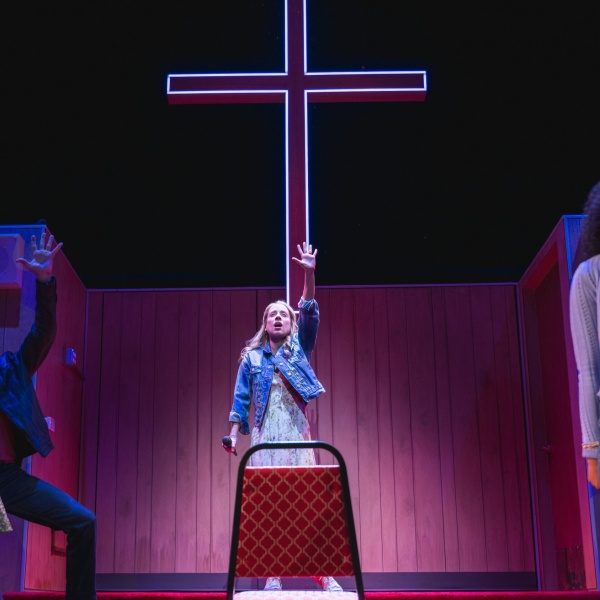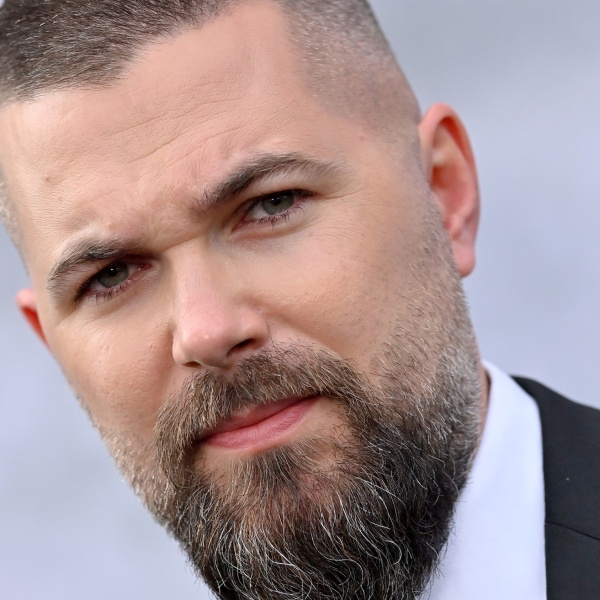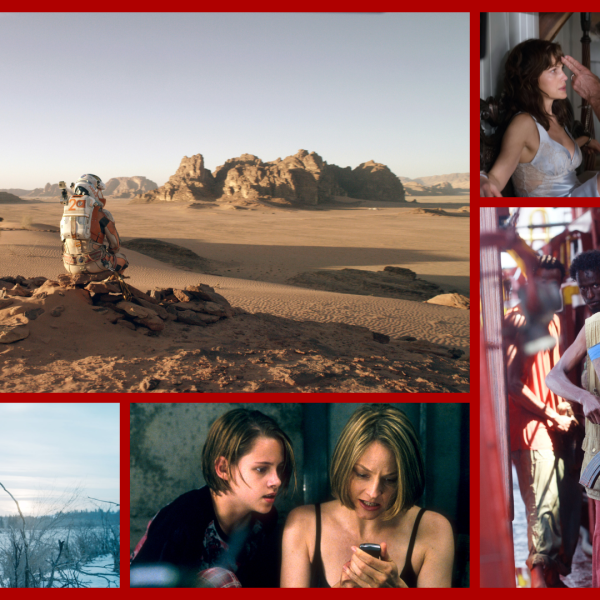John Sayles has made a career out of writing and directing some of the finest ensemble films of all time, movies like “Matewan,” “Eight Men Out,” and “Sunshine State” that create rich tapestries of American life filled with intimate detail and epic sweep. One of his most entertaining and sophisticated works, the 1996 contemporary Western “Lone Star,” is newly available in 4K and Blu-ray editions from Criterion, and it has, like most of Sayles’ movies, only improved with age. As a Texas sheriff investigates an old murder, the film becomes timeless and specifically of its era (particularly in the border crossing scenes conceived and shot before the wall that eventually went up in Sayles’ location), a complex consideration of cultural conflicts and generational divides that seem hardwired into the American consciousness.
It’s a great American epic, yet like all of the director’s films it was shot on a modest budget; although Sayles has written several big studio films for hire, he’s never had Hollywood money on his directorial efforts. Yet none of his movies ever seem to strain against their resources; Sayles began as a writer on low-budget genre fare like “Piranha” and “Alligator” and as a director on the self-financed “Return of the Secaucus Seven,” and he’s never lost his ability to maximize whatever time and money he’s given to create ambitious work that looks like it cost five times its budget. In an interview with IndieWire, Sayles shared a few of his techniques for getting a lot out of a little, and how he applied these techniques to “Lone Star.”
Shoot in a Widescreen Aspect Ratioand Pick the Right Locations
“Lone Star,” like “City of Hope” before it, was shot in a 2.35:1 aspect ratio, something Sayles felt helped create a sense of a larger community. “We went down to the border and got a lot of production value that’s free,” Sayles said, adding that often he has written films around dynamic locations. “When I had the idea for ‘Sunshine State’ but hadn’t written it yet, I went to scout the place where I thought it should be made and realized, ‘Oh, the Spanish came here in 1600 and built a movie set for me! I can set a scene here.’ Most of my movies are about groups of people and a community, so the location scout is really important to me.”
Choose Key Scenes to Spend Money On
“Sometimes there are just going to be one or two scenes that have some scale, and you take the effort to find the perfect place,” Sayles said. One of the key locations in “Lone Star” was a bridge where a central murder took place, and although it was a bit remote it gave Sayles everything he needed and tied together multiple storylines and areas. “That location was worth the money to give the sense that this is a whole county we’re talking about, not one little area.”

Another important location was an Army base. “At first we started talking with the guy who deals with publicity and movies for Fort Sam Houston, and we realized that the Army rules were that he had to be on the set — not just if we were doing something where military guys were doing military things, but in their home scenes as well. So we said, ‘Well, thanks for all your information, we’re going to do this without you.’” Knowing that several former military bases around the country had closed and been turned into junior colleges, Sayles asked around and discovered that there was not only a junior college that could double as an Army base, but there was a National Guard headquarters next door. “They had all this military equipment, and there was just a fence. So we shot on the other side of the fence, with all the equipment in the background, and didn’t have to deal with the military or anything like that.”
Let Actors and Action Bleed Outside of the Frame
“If you want the feeling that there’s a big crowd watching something, you get 12 people,” Sayles said, “but when you frame your shot, you’re cutting some of the people in half.” By showing only half of the actors positioned at either edge of the frame, “That extends the crowd. There’s nobody on the other side of them, but it feels like, ‘Oh, they’re throwing people away. They’re only shooting part of them.’” That power of suggestion extends to getting expansive establishing shots whenever possible. “Often we have not been able to afford a crane, but sometimes it’s like, ‘Well, if we climb up there on top of that building we can get a nice shot.’” For one scene in “Lone Star,” Sayles found a location where he could shoot from a roof across the street and give a feeling of size. “Once you show that, then you can go to tighter shots, but in the audience’s head they know the space is there.”

Think Like an Editor
Though he has on occasion worked with outside editors, for the most part, Sayles edits his own films, and he thinks like an editor when writing and directing to make sure he’s only getting exactly what he needs when shooting — though he did shoot three scenes (including one with himself as a border patrol agent) that he cut from “Lone Star.” “They weren’t bad, we just didn’t need them,” Sayles said. Sayles added that editing his own movies is less about economics than maintaining authorial control in the way that writing novels accustomed him to. “You’re still working with the actors — they’re not there, but you’re using different takes to put together a performance they never gave. You’re trying to make their best stuff even better. Then you’re working with the music and a composer and taking away or adding sound, and for me, that’s all just another part of the storytelling. I wouldn’t ever have somebody come in and write the last draft of my novel or short story, and so right now I can’t imagine ever not editing one of my movies.”






